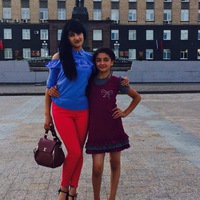
Сопоставьте Кто захоронен в погребени-ях Сынтас, Бесоба, Аралто-бе? Почему останки найден-ного
человека в могильникеАралтобе относят к сар-матскому вождю? Можноли сделать вывод о том, чтосарматский вождьВождь такжеявляется «Золотым челове-ком»? Сравните могильникии сделайте вывод. 0
0
 0
0
Ответы на вопрос
 Внимание! Ответы на вопросы дают живые люди. Они могут содержать ошибочную информацию, заблуждения, а также ответы могут быть сгенерированы нейросетями. Будьте внимательны. Если вы уверены, что ответ неверный, нажмите кнопку "Пожаловаться" под ответом.
Внимание! Ответы на вопросы дают живые люди. Они могут содержать ошибочную информацию, заблуждения, а также ответы могут быть сгенерированы нейросетями. Будьте внимательны. Если вы уверены, что ответ неверный, нажмите кнопку "Пожаловаться" под ответом.

Ответ:
1) залотои человек
2)потому что он мог побидить кого угодно
3)золотои человек его так назвали потому што он был в золотои кольчуге в форме животных
 0
0
 0
0

Who is buried in the Sintas, Besoba, and Araltobe burials?
The Sintas, Besoba, and Araltobe burials are archaeological sites located in Kazakhstan. The remains found in these burials are believed to belong to a Sarmatian leader. The Sarmatians were a nomadic Iranian people who inhabited the Eurasian Steppe during the 1st millennium BC to the 4th century AD.The specific individuals buried in these sites are as follows: - Sintas: The Sintas burial is associated with a Sarmatian warrior. The remains found in this burial include a rich array of grave goods, such as weapons, jewelry, and horse harnesses. - Besoba: The Besoba burial is also associated with a Sarmatian warrior. The grave goods found in this burial include weapons, armor, and personal items. - Araltobe: The Araltobe burial is believed to be the tomb of a Sarmatian noblewoman. The grave goods found in this burial include jewelry, pottery, and other personal items.
These burials provide valuable insights into the material culture and social hierarchy of the Sarmatian people.
Why are the remains found in the Araltobe burial considered to belong to a Sarmatian leader?
The remains found in the Araltobe burial are considered to belong to a Sarmatian leader based on several factors. Firstly, the grave goods found in the burial are indicative of a high-status individual. The presence of elaborate jewelry, pottery, and other personal items suggests that the person buried in Araltobe held a position of power and wealth within the Sarmatian society.Secondly, the location and construction of the burial itself suggest that it was reserved for an important figure. The Araltobe burial is a large mound tomb, which was a common burial practice for Sarmatian leaders. The size and prominence of the burial mound indicate the significance of the individual buried within.
Lastly, the archaeological context and dating of the burial align with the Sarmatian period. The Sarmatians were known to inhabit the region during the 1st millennium BC to the 4th century AD, and the material culture associated with the Araltobe burial is consistent with this timeframe.
It is important to note that the identification of the individual as a Sarmatian leader is based on archaeological evidence and interpretations, and further research and analysis may provide additional insights into the identity and role of the person buried in Araltobe.
Can we conclude that the Sarmatian leader buried in Araltobe is also the "Golden Man"?
The "Golden Man" is a famous archaeological find from Kazakhstan, which refers to a burial site discovered in the Issyk kurgan. The burial contained the remains of a high-ranking Saka warrior adorned with a golden suit of armor. The "Golden Man" has become an iconic symbol of Kazakhstan's ancient history and cultural heritage.While the Araltobe burial is associated with a Sarmatian leader, it is not directly linked to the "Golden Man" burial. The "Golden Man" is believed to belong to the Saka culture, which predates the Sarmatians. The Saka and Sarmatians were distinct nomadic groups that inhabited the region at different times.
Therefore, based on the available information, we cannot conclude that the Sarmatian leader buried in Araltobe is the same individual as the "Golden Man." The "Golden Man" is associated with the Saka culture, while the Araltobe burial is associated with the Sarmatians.
Comparison of the burial sites and conclusion
The Sintas, Besoba, and Araltobe burials, along with the "Golden Man" burial, provide valuable insights into the ancient cultures and societies that inhabited the region of Kazakhstan.The Sintas, Besoba, and Araltobe burials are associated with the Sarmatians, a nomadic Iranian people who lived in the Eurasian Steppe. These burials contain the remains of high-status individuals, including warriors and a noblewoman, and are characterized by rich grave goods and elaborate burial practices.
On the other hand, the "Golden Man" burial is associated with the Saka culture, an earlier nomadic group that inhabited the region. The "Golden Man" burial is particularly notable for its golden suit of armor and its significance in Kazakhstani cultural heritage.
In conclusion, the Sintas, Besoba, and Araltobe burials provide important archaeological evidence of the Sarmatian culture, while the "Golden Man" burial represents the Saka culture. These burials contribute to our understanding of the ancient peoples who lived in Kazakhstan and their social structures, material culture, and burial practices.
 0
0
 0
0
Похожие вопросы
Топ вопросов за вчера в категории История
Последние заданные вопросы в категории История
-
Математика
-
Литература
-
Алгебра
-
Русский язык
-
Геометрия
-
Английский язык
-
Химия
-
Физика
-
Биология
-
Другие предметы
-
История
-
Обществознание
-
Окружающий мир
-
География
-
Українська мова
-
Информатика
-
Українська література
-
Қазақ тiлi
-
Экономика
-
Музыка
-
Право
-
Беларуская мова
-
Французский язык
-
Немецкий язык
-
МХК
-
ОБЖ
-
Психология
-
Физкультура и спорт
-
Астрономия
-
Кыргыз тили
-
Оʻzbek tili


























